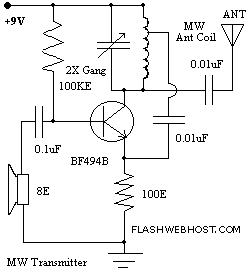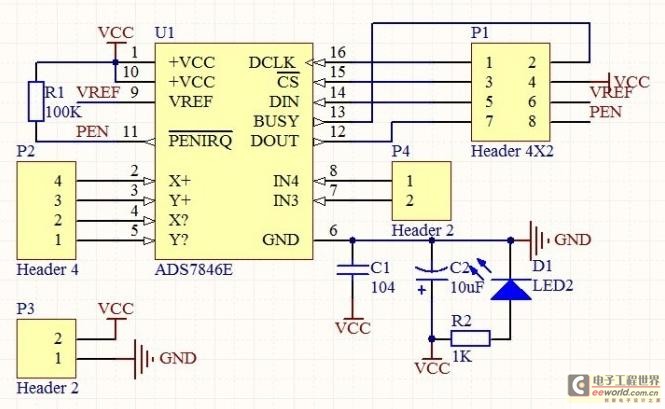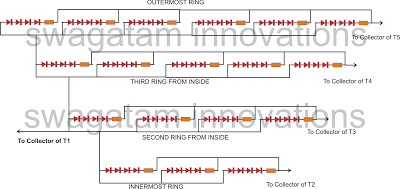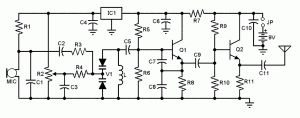
make tv transmitter
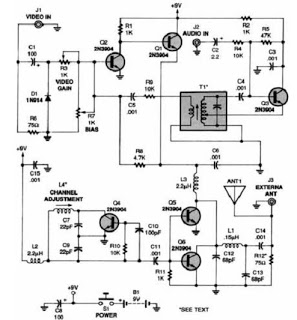
One of the most useful devices for video enthusiasts is a low-power TV transmitter. This device can transmit a signal from a VCR to any television in a home or backyard, allowing for the convenience of watching movies by the pool on a portable device while the tape or laserdisc plays indoors. It also enables the retransmission of cable TV for private viewing. Videotapes can be duplicated from one VCR to another without the need for a connecting cable. When connected to a video camera, a TV transmitter can serve in surveillance applications for monitoring specific locations. The primary challenge for video enthusiasts is the high cost of commercial TV transmitters. However, a DIY solution is available: this TV transmitter can be built for less than $30 in just one evening. The simplest method is to order a kit from the provided source in the Parts List, which also offers a custom case for the kit. Sufficient information is available to construct the TV transmitter from scratch. The device combines line-level audio and video signals, transmitting the resulting signal up to 300 feet. It can be powered by a 9-volt battery, although a 12-volt DC supply is recommended during the alignment procedure to ensure maximum transmission range and optimal picture quality. Aligning the TV transmitter is straightforward and requires no special equipment. The transmitter's output can be tuned to any TV channel from 2 to 6, providing a wide range to avoid interference with nearby TV viewers. Compliance with FCC regulations is necessary; if interference with a licensed station occurs, the unit must be shut down. The schematic diagram of the TV transmitter circuit is presented in Figure 1. Video signals input at jack J1 are first terminated by resistor R6 and coupled through capacitor C1 to clamping diode D1, which stabilizes the sync pulses to reduce blooming effects. Potentiometer R3 adjusts the gain of the video signal, similar to the contrast control on a TV set. Bias-control R7 adjusts the black level of the picture, ensuring some signal is transmitted even for completely dark images, allowing the TV receiver to maintain proper sync. Potentiometers R3 and R7 are adjusted in tandem for optimal performance. RF transformer T1 and its internal capacitor create a tank circuit for a Hartley oscillator tuned to 4.5 megahertz. Audio signals at input jack J2 are coupled to the base of transistor Q3 via capacitor C2 and resistor R4, modulating the base signal of Q3 to create an audio subcarrier that is 4.5 megahertz higher than the video carrier frequency. The FM modulated subcarrier is transmitted to the modulator section through capacitor C5 and resistor R9, which adjusts the subcarrier level relative to the video signal. Transistors Q1 and Q2 amplitude modulate the video and audio signals onto an RF carrier signal. The operating frequency is determined by coil L4, consisting of 3.5 turns of 24-gauge enameled wire wound around a form with a standard ferrite slug. This coil is part of a Colpitts tank circuit, which also includes capacitors C7 and C9, forming the feedback network for transistor Q4 to oscillate at the specified frequency. The RF output from the oscillator section is amplified by transistors Q5 and Q6, powered by the modulator section. Antenna matching and low-pass filtering are accomplished using capacitors C12, C13, and inductor L1. Resistor R12 is optional and can be included to assist in matching the output signal to various antenna types.One of the most useful gadgets a video enthusiast can have is a low-power TV Transmitter. Such a device can transmit a signal from a VCR to any TV in a home or backyard. Imagine the convenience of being able to sit by the pool watching your favorite movie on a portable with a tape or laserdisc playing indoors. You could even retransmit cable TV fo r your own private viewing. Videotapes can be dubbed from one VCR to another without a cable connecting the two machines together. When connected to a video camera, a TV transmitter can be used in surveillance for monitoring a particular location.
The main problem a video enthusiast has in obtaining a TV transmitter is that a commercial units are expensive. However, we have some good news! You can build the TV Transmitter described here for less than $30 in one evening! The easiest way to do that is to order the kit thats available from the source given in the Parts List (a custom case for the kit is also available).
Nevertheless, we present enough information here to build the TV Transmitter from scratch. The TV Transmitter combines line- level audio and video signals, and transmits the resulting signal up to 300 feet. The circuit can be powered from a 9- volt battery. It is suggested that a 12-volt DC supply during be used during the alignment procedure. This would insure maximum transmission range and best possible picture. Aligning the TV Transmitter requires no special equipment whatsoever, and it is a very simple procedure.
The Transmitter`s output can be tuned to be received on any TV channel from 2 to 6. The range of channels is wide enough so that the unit will not interfere with other TV viewers who are nearby. To comply with FCC rules, it is mandatory the nearby TV viewers are not disturbed by the transmission.
If your activities interfere with the reception from a licensed station, regardless of the reason, you must shut down your unit. Figure 1 is the schematic diagram of the TV Transmitter circuit. Video signals input at jack J1 are first terminated by resistor R6 and coupled through capacitor C1 to clamping-diode D1.
The clamping forces the sync pulses to a fixed DC level to reduce blooming effects. Potentiometer R3 is used to set the gain of the video signal; its effect is similar to that of the contrast control on a TV set. Bias-control R7 can be used to adjust the black level of the picture so that some level of signal is transmitted, even for a totally dark picture.
That way, a TV receiver can maintain proper sync. As we`ll get to later, potentiometers R3 and R7 are cross adjusted for the best all-around performance. RF-transformer T1 and its internal capacitor form the tank circuit of a Hartley oscillator that`s tuned to 4.
5 megahertz. Audio signals input at J2 are coupled to the base of Q3 via C2 and R4: the audio signal modulates the base signal of Q3 to form an audio subcarrier thats 4. 5-megahertz higher than the video-carrier frequency. The FM modulated subcarrier is applied to the modulator section through C5 and R9. Resistor R9 adjusts the level of the subcarrier with respect to the video signal. Transistors Q1 and Q2 amplitude modulate the video and audio signals onto an RF-carrier signal. The operating frequency is set by coil L4, which is 3. 5 turns of 24- gauge enameled wire on a form containing a standard ferrite slug. That coil is part of a Colpitts tank circuit also containing C7 and C9. The tank circuit forms Q4`s feedback network, so Q4 oscillates at the set frequency The RF output from the oscillator section is amplified by Q5 and Q6, whose supply voltage comes from the modulator section.
Antenna matching and low-pass filtering is performed by C12, C13, and L1. Resistor R12 is optional; it is added to help match the output signal to any kind of antenna. (More on that in a moment. ) 🔗 External reference
The main problem a video enthusiast has in obtaining a TV transmitter is that a commercial units are expensive. However, we have some good news! You can build the TV Transmitter described here for less than $30 in one evening! The easiest way to do that is to order the kit thats available from the source given in the Parts List (a custom case for the kit is also available).
Nevertheless, we present enough information here to build the TV Transmitter from scratch. The TV Transmitter combines line- level audio and video signals, and transmits the resulting signal up to 300 feet. The circuit can be powered from a 9- volt battery. It is suggested that a 12-volt DC supply during be used during the alignment procedure. This would insure maximum transmission range and best possible picture. Aligning the TV Transmitter requires no special equipment whatsoever, and it is a very simple procedure.
The Transmitter`s output can be tuned to be received on any TV channel from 2 to 6. The range of channels is wide enough so that the unit will not interfere with other TV viewers who are nearby. To comply with FCC rules, it is mandatory the nearby TV viewers are not disturbed by the transmission.
If your activities interfere with the reception from a licensed station, regardless of the reason, you must shut down your unit. Figure 1 is the schematic diagram of the TV Transmitter circuit. Video signals input at jack J1 are first terminated by resistor R6 and coupled through capacitor C1 to clamping-diode D1.
The clamping forces the sync pulses to a fixed DC level to reduce blooming effects. Potentiometer R3 is used to set the gain of the video signal; its effect is similar to that of the contrast control on a TV set. Bias-control R7 can be used to adjust the black level of the picture so that some level of signal is transmitted, even for a totally dark picture.
That way, a TV receiver can maintain proper sync. As we`ll get to later, potentiometers R3 and R7 are cross adjusted for the best all-around performance. RF-transformer T1 and its internal capacitor form the tank circuit of a Hartley oscillator that`s tuned to 4.
5 megahertz. Audio signals input at J2 are coupled to the base of Q3 via C2 and R4: the audio signal modulates the base signal of Q3 to form an audio subcarrier thats 4. 5-megahertz higher than the video-carrier frequency. The FM modulated subcarrier is applied to the modulator section through C5 and R9. Resistor R9 adjusts the level of the subcarrier with respect to the video signal. Transistors Q1 and Q2 amplitude modulate the video and audio signals onto an RF-carrier signal. The operating frequency is set by coil L4, which is 3. 5 turns of 24- gauge enameled wire on a form containing a standard ferrite slug. That coil is part of a Colpitts tank circuit also containing C7 and C9. The tank circuit forms Q4`s feedback network, so Q4 oscillates at the set frequency The RF output from the oscillator section is amplified by Q5 and Q6, whose supply voltage comes from the modulator section.
Antenna matching and low-pass filtering is performed by C12, C13, and L1. Resistor R12 is optional; it is added to help match the output signal to any kind of antenna. (More on that in a moment. ) 🔗 External reference
